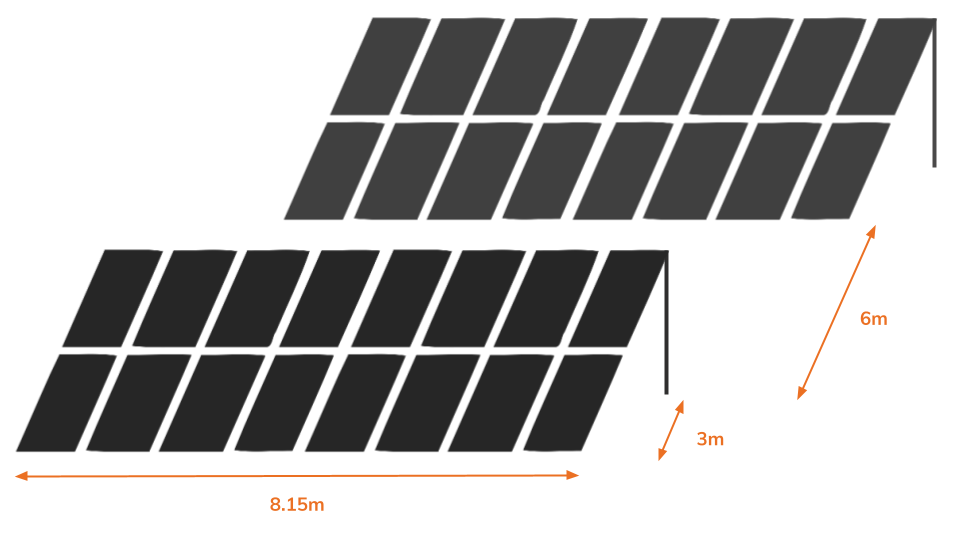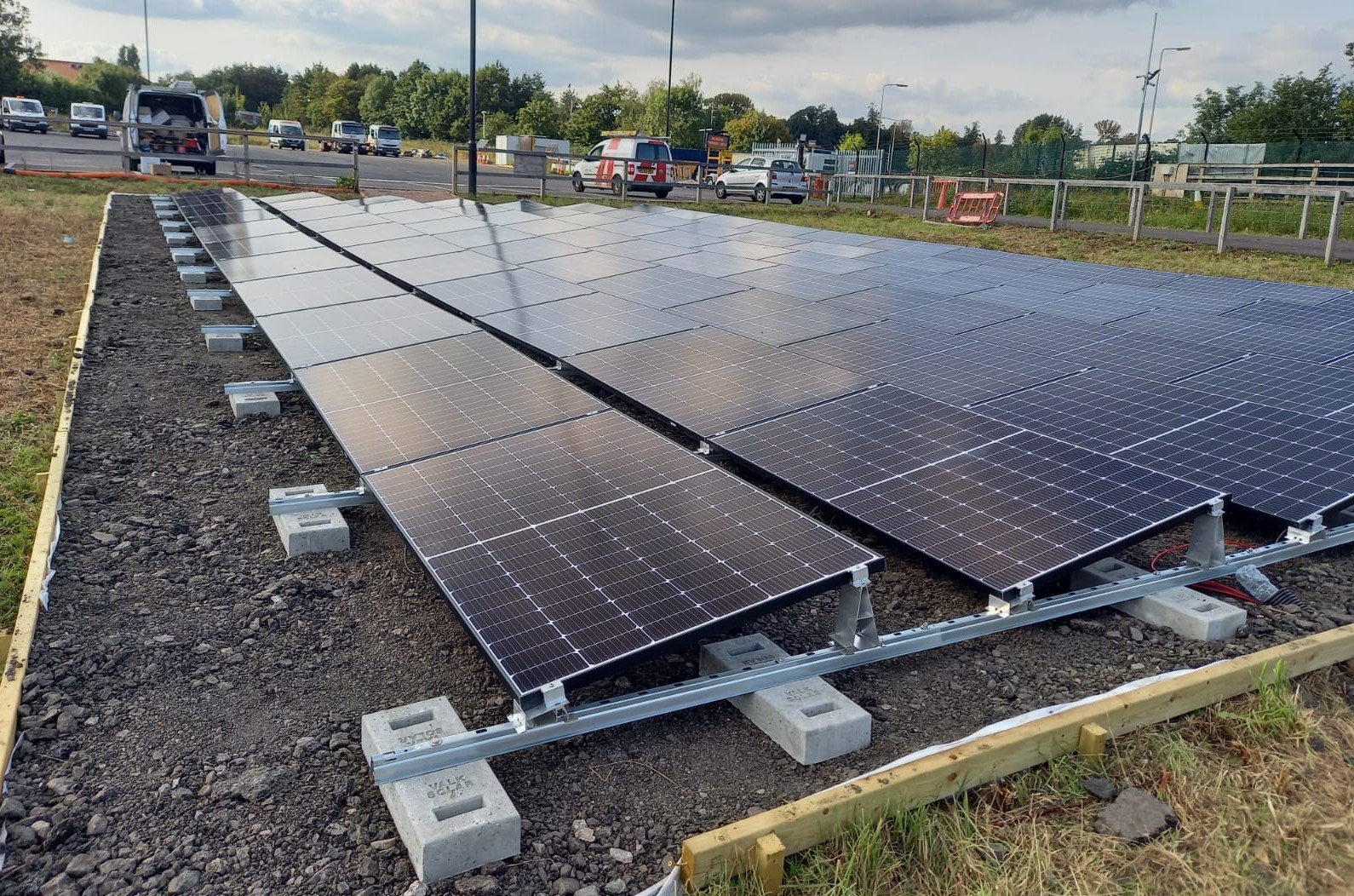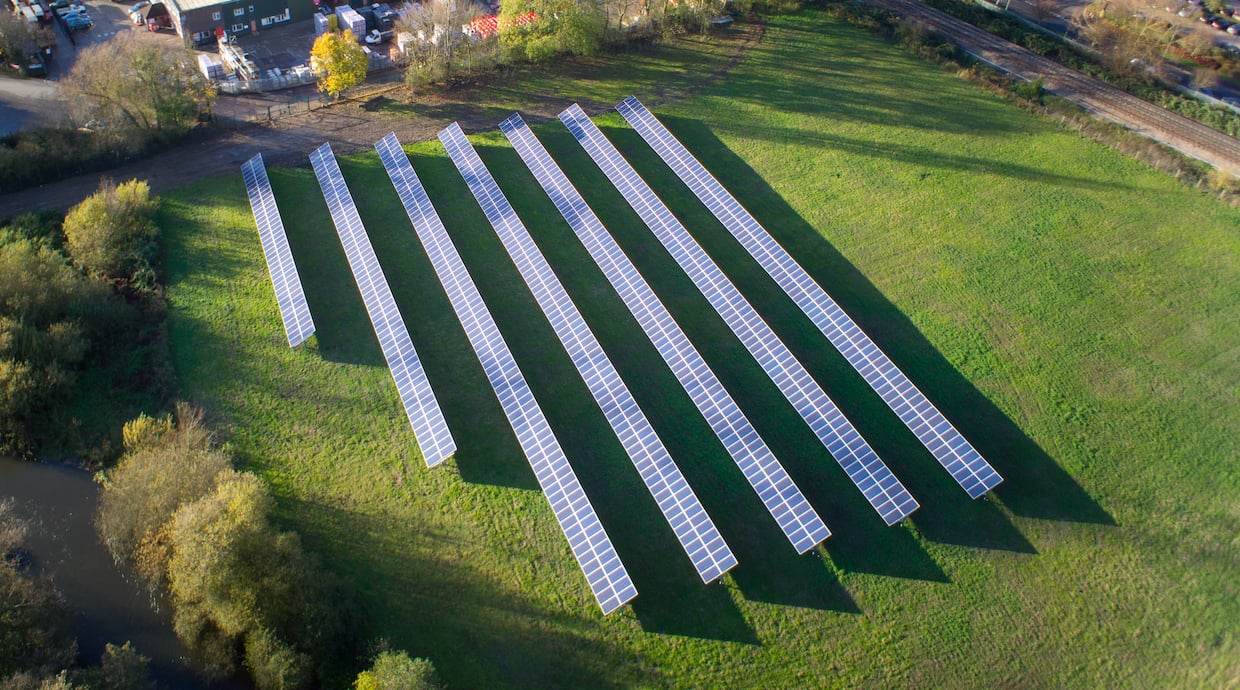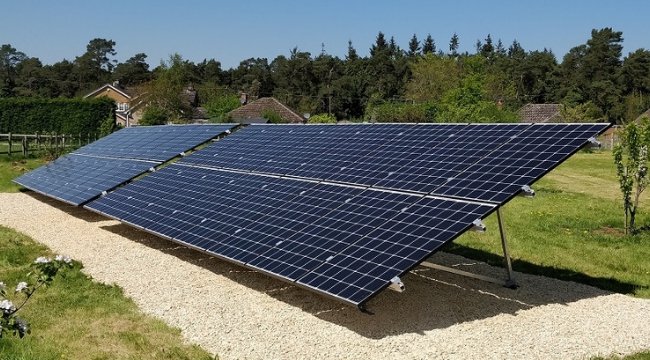One of the great things about solar power is how scalable the technology is; you can generate electricity on top of an individual streetlamp or a vast solar farm. When it comes to residential PV, we often just think of rooftop arrays, but recently we have seen a rise in interest in domestic ground mounted solar panels.
The main benefit of ground mounts, if you have the land, is that you can choose the optimal orientation to maximise solar generation, which isn’t possible with an existing rooftop. It’s also a great option if your roof isn’t strong enough to support the weight of a solar array. In a ground mount, panels are fixed to a metal frame, which is secured by concrete or pile-driven foundations. But what else do you have to consider?
Planning and grid permissions
Prior to the installation of a ground mount, the two main hurdles to overcome are gaining grid approval and planning permission. Here at Spirit we can apply for both of these, liaising with the grid network and planning office on your behalf. If desired this can be treated as a feasibility study and separated out from the main quote for a fee of £850 + VAT, which is refundable on point of order.
Unlike residential rooftop installations, planning permission is required for pretty much all ground mounted solar arrays (unless it is under 9m2 and other restrictions). Prior grid connection permission, from the District Network Operator, is necessary for all systems larger than 16A per phase - which will be the case for nearly all ground mounts.
How much land do you need?
For domestic ground mounted solar panels to make financial sense, the system ought to be at least 10kWp and your usage 10,000kWh minimum per year. In a single phase property, you may be looking at a 10kWp system; in a 3 phase property, it may be 20-30kWp.
Any ground mount <30kW would be installed with K2 P-rack, which comes as a standard two rows of eight panels in portrait, i.e. installations will always be multiples of 16 panels. Using 315W panels means each rack is roughly 5kWp.

One P-rack is approximately 8.15m x 3m, panel dependent. If you have the K2 P-racks organised in rows, then you need a fair bit of spacing (usually ~6m) in between to mitigate against self-shading. Having the K2 P-racks installed side-by-side is the most area efficient install (but obviously practicality will depend on the land you have available):
|
Ground mount system size |
Area (racking side-by-side) |
Area (racking in rows) |
|
10 kWp |
16.3m x 3m (49m2) |
8.15m x 12m (98m2) |
|
20 kWp |
32.6m x 3m (98m2) |
8.15m x 30m (245m2) |
|
30 kWp |
48.9m x 3m (147m2) |
8.15m x 48m (391m2) |
We have recently begun to install some ground mounted systems with Van der Valk. This is a low profile mounting often used on commercial flat rooftops. It's easier and quicker to install, cutting down installation costs, and requires less spacing between panels.

Cost
The current average cost for a ground mounted PV system is around 15-20% more expensive than retrofitting panels on roof. This is because there are more materials and labour required for the installation. Our rough cost by system size are as follows:
|
Ground mount system size |
Ballpark price (ex. VAT) |
Annual output (facing south, unshaded) |
|
10 kWp |
£27,000 |
10,090 kWh |
|
20 kWp |
£40,000 |
20,160 kWh |
|
30 kWp |
£51,000 |
30,240 kWh |
Assuming Longi 315W all black panels and standard string inverter.
Cable runs and trenching
A ground mount will obviously need electric cables running between the array and the home’s supply. We exclude trenching work in our quotes, so this would need to be undertaken by the property owner or subcontractor. For the cable run, we assume a distance of under 100m between the house supply and the panels, and may exclude the AC inverter-to-house cable.
Shading
No PV systems appreciate shade, and of course they are much more likely to be overshadowed when down on the ground than up high on rooftops. This is another reason why you need quite a lot of space to fit in a ground mount, as there must be sufficient distance between the panels and any surrounding trees or buildings to avoid shading.

Exporting vs using power on site
If you have a lot of land on which you’re exploring building your own mini solar farm, it’s unlikely that it will make financial sense to sell the energy straight to the grid. Now solar subsidies have ended, export tariffs are relatively low so you will either have to sell the energy through an aggregator or community scheme, or just install solar with the aim of utilising the power on site.
In this case, there are ways to maximise your on site usage, such as sizing the system to match your annual electricity demand and supporting it with batteries to store the energy for when you need it.
What can you do with ground around/under it?
In a ground mounted installation, panels are typically raised about 0.5m above the ground. What you do with the space below is up to you: you could let the grass grow (allowing easy enough access for mowing), sow wildflowers for pollinators (though nothing that will overgrow or shade the panels), put down weed matting, or lay a surface that may increase solar generation.
We did some modelling to determine how the albedo (reflectivity) of the underlying surface affected the output of ground mounted solar panels. For a standard installation, we found that putting white pebbles around the array can increase output by 3% compared to black bitumen. If you’re using bifacial panels, white pebbles can increase the output by 5%, or by 8% when compared to normal panels on grass. So for around a 2-3% increase in cost by choosing bifacial panels for your ground mount system, you could see up to 8% higher output.
Solar trackers
It’s possible to enhance ground mounted PV with a solar tracking system that tilts the panels to follow the movement of the sun. A single axis tracker (daytime tilting) can increase output by 20-25%, and a dual axis tracker (daytime and seasonal tilting) can increase output by 25-35%. Solar trackers come with a substantially higher upfront investment, however, and increased maintenance costs due to the specialised moving parts involved. So for domestic systems, they are not financially viable.
Maintenance
Like all solar PV, very little maintenance is required. The panels have no moving parts, so can be expected to last for 25+ years, while the inverter will need replacing after around 10 years. You can ensure the system is performing at its best with an electrical inspection and a clean every couple of years. The benefit of a ground mounted system is that it’s easy to check if the panels are free of dirt and debris, and even easier to give them a quick clean (though, if you’re doing this yourself, be careful to use soft brushes and low pressure water to avoid damage).
Designing your system
Our experienced team is happy to assist you with designing and installing your PV system, whether the solar panels are ground or roof mounted.
Please give us a call on 0118 951 4490 to discuss or use our online calculator to work out what size system you could fit on your property:










